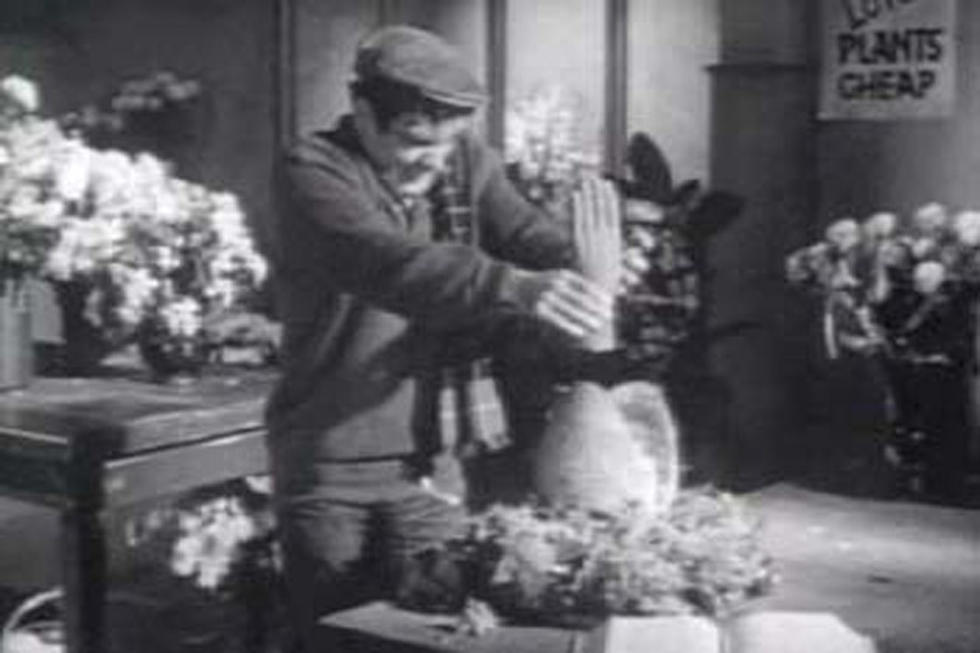
It Came From the Cultosphere: The Grueling Horror of ‘The Texas Chainsaw Massacre’
If you've never seen 'The Texas Chainsaw Massacre' (and I'm talking about the 1974 original here, obviously), there are two things you should know: 1) It's not as bad as you think. 2) It's much worse than you think.
Those statements are both true, and not in some cute "it's not bad, it's worse" sort of way. Most people who haven't seen the movie think it's a nonstop barrage of screaming chainsaws and flying body parts.
Truth is, director Tobe Hooper's horror classic is downright Hitchcockian in its restraint, with surprising little blood and virtually no gore onscreen. And that chainsaw? It only accounts for a single onscreen death and no dismemberment. (It does get waved around a lot, though -- to memorable effect.)
Sounds positively family friendly, right? Well, that brings me to point No. 2: 'The Texas Chainsaw Massacre' is one of the most intense, claustrophobic, nerve-wracking horror movies ever made. And that's mostly for reasons that can barely be understood, much less duplicated.
Sure, it's easy to pick the movie apart, scene by scene, shot by shot, and analyze how Hooper placed the camera here for maximum tension or ended a shot there to let the terror linger, but the truth is, when you're watching the movie, you're too worried about what's going to happen next to break the experience down and analyze it.
Some films excel at shocking the audience with a surprise gross out or sudden turn of plot, and some movies (Hitchcock's the prime example here) work by ratcheting up the suspense until it's almost unbearable. But the best horror movies work by generating a sense of dread. Things are bad, but what's really troubling is the nagging feeling they're going to get worse. Much worse.
'The Texas Chainsaw Massacre' takes its time making the audience feel troubled. We get to know the whiny, squabbling teens in the van, and everything seems pretty normal, but that changes when they pick up a hitchhiker played with consummate creepiness by Edwin Neal. He taunts the kids, threatens them and slices open his palm, giggling the whole time. They kick him out, but the die is cast. Obviously, this trip will not end well for anyone.
And still, the movie doesn't hit us with the horror right away. The kids meet a gas station owner who warns them against visiting an old house. A little weird, but he's friendly enough. They visit a swimming hole, but it's empty. Finally, they wind up at an old farmhouse. Hoping to get some gas, one of them, Kirk, walks inside. It looks deserted and ominous, but it's still daytime. How bad could this be?
Very bad, it turns out. Maybe the worst house on the face of the Earth. After all that slow, suspenseful (and dreadful) buildup, 'The Texas Chainsaw Massacre' suddenly lurches into high gear with absolutely no warning. Kirk steps into the house, a door opens and a huge man in a human-face mask clubs him with a sledgehammer, drags him behind a steel door and slams it shut. That's it. There's no warning, no explanation, nothing.
And from that point, the movie never lets up . All the dread that's been building explodes, over and over again, as the teens get killed and the situation gets more terrifying. In the film's low point (or high point, if you're a horror movie fan), lone survivor Sally (Marilyn Burns) thinks she's finally managed to escape, only to be knocked out and then awakened as the guest of honor at a hellish dinner party.
Behind-the-scenes reports say filming that sequence was miserable, with the heat topping 100 degrees in the house and all the animal bones creating a terrible stench. Somehow, all that horror comes right off the screen, making for one of the most nightmarish scenes in movie history.
Sounds like fun, right? Well, it is fun, sort of, if you're a fan of movies like this. It's a pleasure -- a strange pleasure, but a pleasure nonetheless -- to have a talented director put the screws to you for 90 minutes or so. People compare horror movies to roller coasters for a reason: They're both intense experiences that simulate violence, but nobody gets hurt.
Also, 'The Texas Chainsaw Massacre' isn't playing the same game as slasher movies like 'Friday the 13th' or 'Nightmare on Elm Street.' For better or for worse, Hooper places you squarely with the victims. You're not following them in some lurching, first-person tracking shot, making bad jokes about their dire predicament or admiring the intricate killing machines you've built to torture them. You're suffering right along with them, hoping against hope that they'll escape.
'The Texas Chainsaw Massacre,' to its credit, is never about how cool the monsters are. It's about how terrifying they are. And believe me -- they're plenty terrifying.
More From Diffuser.fm









